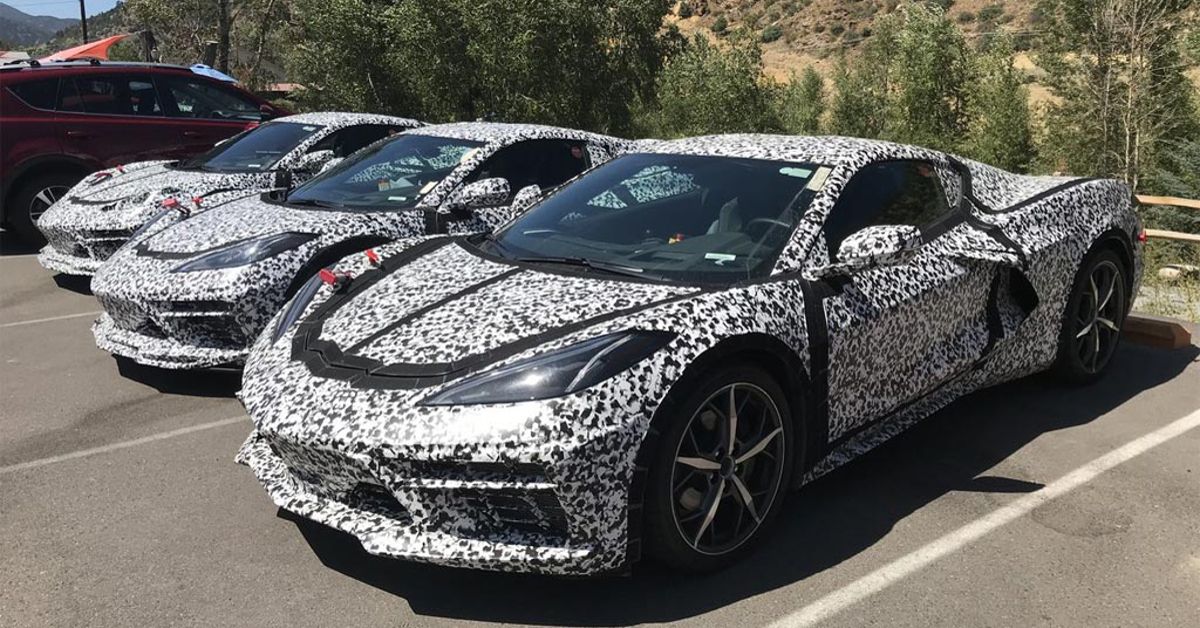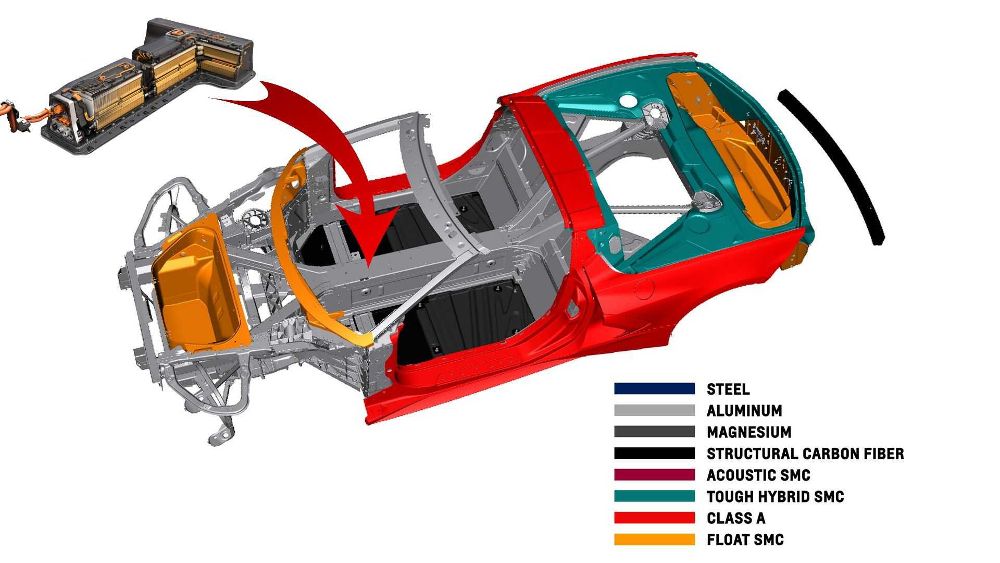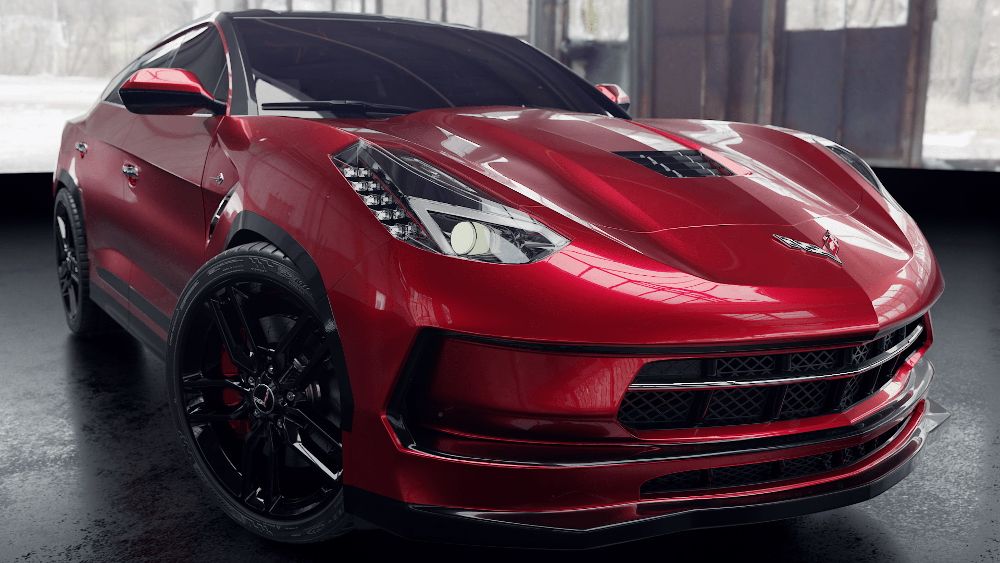Hot on the heels of Ford’s all-electric Mustang Mach-E, the launch of the mid-engined Chevy Corvette C8 was preceded by persistent rumors of an electrified ‘Vette waiting in the wings, or even a full-electric sub-brand. And, based on GM’s vision of “zero crashes, zero emissions, and zero congestion”, this speculation was more than a baseless conspiracy theory.
So, a year after launch and with more than 20,000 units of the eighth-generation Chevrolet Corvette already built, the time is right to expand the family. And in keeping with GM’s goal of launching 20 electric cars and trucks by 2025, EV engineers, many seconded from Corvette Chief Engineer, Tadge Juechter’s original team, are currently busy electrifying GM’s “halo” car.
According to a special report on vehicle electrification published in SAE International’s July 2021 issue of “Tech briefs”, a Corvette hybrid will arrive in time for the 2023 model year wearing the ‘E-Ray’ moniker GM registered six years ago and renewed in August 2020.
With an expected starting price of well below $100,000, the E-Ray should comfortably take the fight to the Acura NSX, BMW’s i8 replacement, and Tesla’s Roadster sports car.
Underneath The Skin Of The Upcoming Electrified Corvette
In hindsight, early analysis of the C8’s chassis already hinted that Juechter may have had an electrified Corvette variant in mind from the outset.
Its aluminum structural backbone is a 6.5 x 12.6 x 41.0-inch box that yields an internal volume of about 2 cubic feet, which on the current car, only houses coolant lines. It’s not difficult to imagine four of GM’s Ultium pouch-style lithium battery modules squeezed into this housing.
According to early GM documents, each of the four battery modules appears to be of equal size and probably houses 20 battery cells, based on the listed spec of a total of 80 cells, with a capacity of 1.94 kWh.
This relatively small battery pack would indicate that the focus of the Corvette’s hybrid drive is probably more on performance than fuel economy or range. Much like the similarly equipped Acura NSX, on all-electric power, the C8 is likely to be restricted to a few miles at low speeds.
Positioned to eventually replace the Grand Sport in the C8 lineup, the E-Ray will offer enhanced performance over the regular model thanks to its advanced plug-in hybrid powertrain that, for the first time ever, will see a Corvette with all-wheel drive.
The electric drive relies on two independently controlled 50-plus hp AC electric motors which, when adjoined, are expected to push out around 115 horsepower and 111 pound-feet of torque. The motors are rumored to be able to spin to 16,000 RPM which would equate to a vehicle speed of roughly 150 mph.
The mid-mounted LT2 6.2-L V8 and its 8-speed Tremec dual-clutch transaxle will continue to do duty in the E-Ray’s hybrid powertrain with minimal changes. However, the E-Ray’s hybrid system will raise the electrified Corvette’s total output to more than 600-hp, with over 880 lb-ft at the front axle, after the roughly 8:1 gear reduction.
This Is How GM Equipped The Upcoming Electrified Corvette With All-Wheel Drive To Support More Powerful Future Corvettes
The fact that the Corvette PHEV transmits the electric power through the front wheels will come as no surprise to those that have had an opportunity to view the cutaway of the C8. Hiding in plain sight is a blanking-plate covering a hole in the front knuckle where axle shafts could pass through.
To clear the way for front-wheel drive, the steering components were placed to give the halfshafts from the pair of electric motors a straight shot at the C8’s front wheel hubs.
However, the dampers, with nowhere to go, required some additional engineering to clear the driveshafts. The conventional units have been replaced by what are known as ‘split yoke dampers’.
On these struts, the single mounting point at the bottom is replaced by a fork with two mounting points that leave space for the shafts to pass through. The Tesla Model 3 AWD uses the same arrangement.
Having proven the concept, GM has even more ambitious plans for the electric C8.
Next up is the Zora edition, planned for the 2025 model year. Honoring Corvette’s patron saint, Zora Arkus-Duntov, this will be to Corvette what the Enzo was to Ferrari – a showcase for the best technology of its time.
This, the most powerful Corvette ever produced by GM will mate a potent pair of electric motors to the twin-turbo 5.5-L DOHCV8 to deliver more than 1000 horsepower and 975 lb-ft of torque.
And in keeping with its ‘zero emissions’ undertaking, Bloomberg recently reported that GM is likely to launch its Project R - a new family of battery-electric crossovers with the Corvette’s badge and design cues - sometime after2025.
While traditionalists may lament the upcoming electrified Corvette, there’s no better way to guarantee life for the Corvette nameplate in a world relentlessly switching to electro-mobility.



